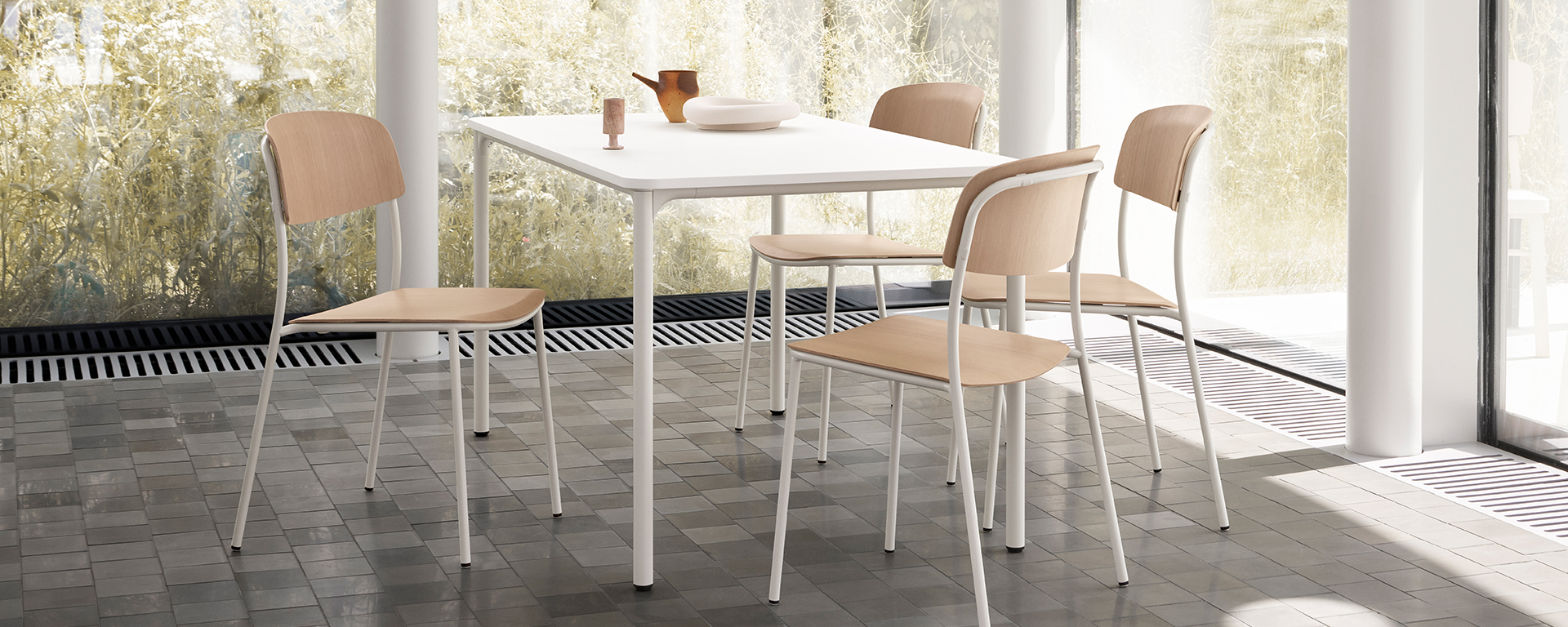Recording and Continuously reducing.
One of the major challenges we face in the modern world is the reduction of greenhouse gas emissions. We provide a detailed breakdown of environmental risk factors by calculating our corporate carbon footprint every year in line with the Greenhouse Gas (GHG) Protocol and with close reference to the ISO 14064 and PAS 2060 standards. We identify the main sources of our emissions – direct (Scope 1) and indirect (Scopes 2 and 3) – and define specific ways to reduce those emissions.
Working together with different departments, we will assign clear and consistent responsibilities and map out workflows, all of which will help us reduce our CO₂ emissions even further in the future. This will allow us to reduce our carbon footprint for our production facilities and our products.
Positive impact on people and the planet.
We have a major impact on social and ecological factors within our own production processes. We can identify risks and weaknesses directly and take specific countermeasures to protect our employees and the environment.
Within our production processes, we prioritise the health of people responsible for making our furniture. We provide an ergonomic working environment to relieve any physical strain and avoid monotony by ensuring a change in workflows every day. Directly filtering any harmful substances that are released makes the air cleaner at every stage of the production process.
High quality standards by hand.
We apply our high quality standards to everything we do. There are many steps we have to take before we can delight our end customers with functional and comfortable contract furniture that lasts. All of our products are manufactured at our own production facilities in Germany. We rely on state-of-the-art technology, premium materials supplied by local partners, and engaged employees who know exactly what they are doing. Working together as a team, we never stop striving to optimise our production processes, and we always adopt a responsible approach to our use of resources.
For us, making things by hand is a core skill. It is an essential part of our production process. We are proud of this fact and are holding on to it. In a world of mass production by machines, it’s rare for things to be made by hand. The benefits of making products by hand are clear... We know our products inside out. We know exactly what they can do and how to repair them when needed to ensure they last and last.
Minimise and reuse.
As our company evolves to become more sustainable, one of our priorities is to monitor and reduce waste, including product packaging. We generate waste as part of our production processes and within our admin department. We accumulate waste when we take back packaging from customers and when our products reach the end of their useful life.
True to our commitment to reducing the amount of waste from our products, we apply the criteria of a circular economy from when we first start developing new products. For more on this, check out our section on our responsible use of resources.
To minimise packaging material waste, we have worked with our suppliers to introduce standardised cardboard boxes that can be reused. And that is just one example. We have also taken further action to reduce the amount of waste generated during our production process and reuse materials to avoid creating excess waste.
We use a UV-hardening water-based varnish system for wooden components. Varnish waste is reduced to a minimum, and excess varnish is collected and reintroduced into the loop after reprocessing.









